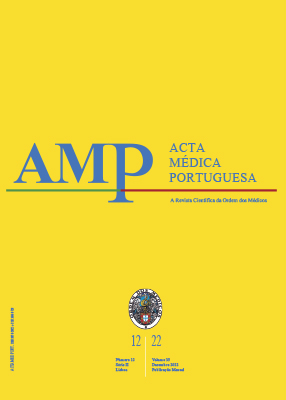Use and Interpretation of Children’s Drawing in Clinical Practice
DOI:
https://doi.org/10.20344/amp.18388Keywords:
Child, Child Development, Drawing, Mental HealthAbstract
N/a.Downloads
References
Woolford J, Patterson T, Macleod E, Hobbs L, Hayne H. Drawing helps children to talk about their presenting problems during a mental health assessment. Clin Child Psychol Psychiatry. 2015;20:68-83. DOI: https://doi.org/10.1177/1359104513496261
Kortesluoma RL, Punamäki RL, Nikkonen M. Hospitalized children drawing their pain: the contents and cognitive and emotional
characteristics of pain drawings. J Child Health Care. 2008;12:284-300. DOI: https://doi.org/10.1177/1367493508096204
Puglionesi A. Drawing as instrument, drawings as evidence: capturing mental processes with pencil and paper. Med Hist. 2016;60:359-87. DOI: https://doi.org/10.1017/mdh.2016.28
Kotroni P, Bonoti F, Mavropoulou S. Children with autism can express social emotions in their drawings. Int J Dev Disabil. 2018;65:248-56. DOI: https://doi.org/10.1080/20473869.2018.1434855
Lev-Wiesel R, Ramot O, Niv H, Daniel E, Gosh Y, Dahan A, et al. Physical versus sexual abuse as reflected in adolescents’ self-figure
drawings: a preliminary study. J Child Sex Abus. 2022;31:33-50. DOI: https://doi.org/10.1080/10538712.2020.1856993
Goldner L, Lev-Wiesel R, Binson B. Perceptions of child abuse as manifested in drawings and narratives by children and adolescents.
Front Psychol. 2021;11:562972.
Dunn J, O’Connor TG, Levy I. Out of the picture: a study of family drawings by children: from step-, single-parent, and non-step families. J Clin Child Adolesc Psychol. 2002;31:505-12. DOI: https://doi.org/10.1207/S15374424JCCP3104_9
Madigan S, Ladd M, Goldberg S. A picture is worth a thousand words: children’s representations of family as indicators of early attachment. Attach Hum Dev. 2003;5:19-37. DOI: https://doi.org/10.1080/1461673031000078652
Fialho O. Desenho infantil, espelho do mundo interno da criança. Lisboa; Edições Colibri; 2019.
Vlachos F, Bonoti F. Left- and right-handed children’s drawing performance: is there any difference? Laterality. 2004;9:397-409. DOI: https://doi.org/10.1080/13576500342000239
Matto HC. Investigating the validity of the Draw-A-Person: screening procedure for emotional disturbance: a measurement validation study with high-risk youth. Psychol Assess. 2002;14:221-5. DOI: https://doi.org/10.1037/1040-3590.14.2.221
Soll BM, Brandelli CA, Vaitses FA, Chinazzo ÍR, Silva DC, Schwarz K, et al. Use of the House-Tree-Person Projective Drawings and Parental Styles Inventory in the global psychological evaluation of transgender youth who seek healthcare at the Gender Identity Program. Front Psychol. 2019;12;10:2488. DOI: https://doi.org/10.3389/fpsyg.2019.02488
Downloads
Published
How to Cite
Issue
Section
License
Copyright (c) 2022 Acta Médica Portuguesa

This work is licensed under a Creative Commons Attribution-NonCommercial 4.0 International License.
All the articles published in the AMP are open access and comply with the requirements of funding agencies or academic institutions. The AMP is governed by the terms of the Creative Commons ‘Attribution – Non-Commercial Use - (CC-BY-NC)’ license, regarding the use by third parties.
It is the author’s responsibility to obtain approval for the reproduction of figures, tables, etc. from other publications.
Upon acceptance of an article for publication, the authors will be asked to complete the ICMJE “Copyright Liability and Copyright Sharing Statement “(http://www.actamedicaportuguesa.com/info/AMP-NormasPublicacao.pdf) and the “Declaration of Potential Conflicts of Interest” (http:// www.icmje.org/conflicts-of-interest). An e-mail will be sent to the corresponding author to acknowledge receipt of the manuscript.
After publication, the authors are authorised to make their articles available in repositories of their institutions of origin, as long as they always mention where they were published and according to the Creative Commons license.









